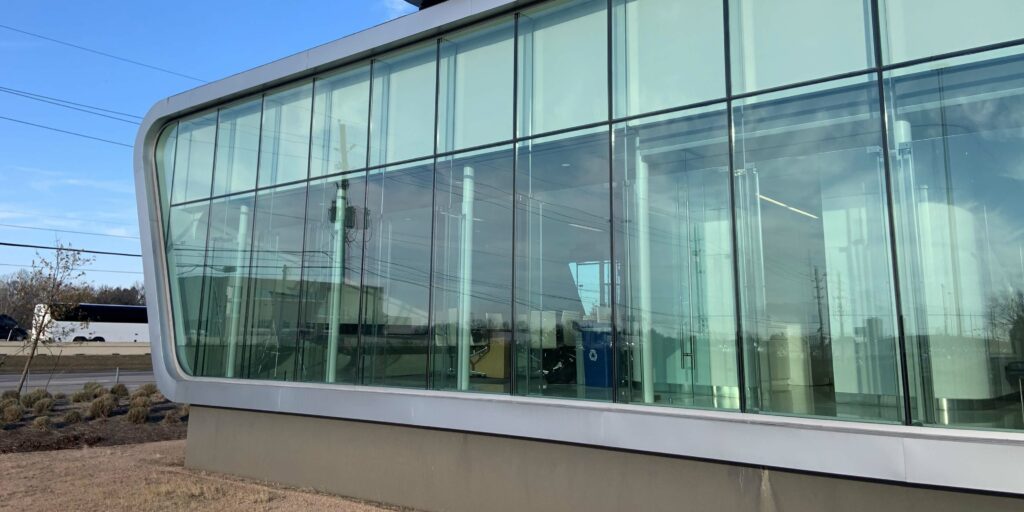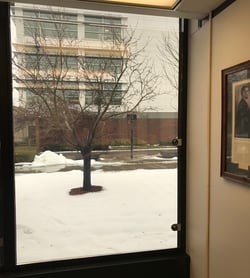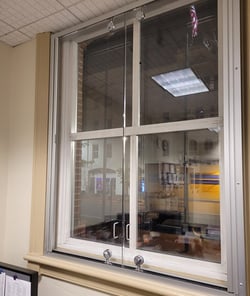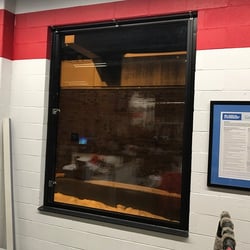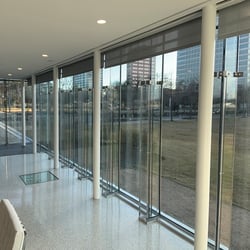When you need bulletproof protection, but can’t install traditional bulletproof windows, consider backglazing as an alternative solution.
Backglazing doesn’t replace existing windows. Instead, a pane of bulletproof glass is installed next to the windows in the interior of the building, typically installed in the building interior, but we can also add bulletproof glass to the outside as well. Depending on the style of backglazing, this material can be permanently installed, moveable, or freestanding. Backglazing is particularly effective for facilities that would benefit from bulletproof glass, but aren’t able to install it due to historical constraints, environmental requirements, logistics, or cost.
What Are Backglazing’s Advantages?
Backglazing Can Actually Stop a Bullet
Window film has a reputation for being a comparable alternative to bulletproof glass that’s more affordable and without the headaches of big construction projects. However, commonly available security window film is not rated or tested to withstand bullets. If you need a bulletproof product, look for information about UL levels testing. At TSS, we offer ballistic protection tested to UL Levels 1 through 8, so you have options that can protect from handgun and rifle fire.
Backglazing Preserves Historical and Aesthetic Integrity
Replacing windows with bulletproof glass windows often requires aesthetic changes that can compromise the look and feel of historical buildings, or buildings with distinct design styles. Backglazing complements existing windows, preserving these important aesthetic qualities.
Backglazing Keeps High-Performance Windows in Place
You don’t have to sacrifice your self-tinting, triple-pane, LEED-certified insulated glass to achieve ballistic protection. With a pane of bulletproof glass backglazing in place, you can preserve function and aesthetics and improve safety.
Backglazing Is Budget-Friendly
Compared to permanent bulletproof windows, backglazing is more affordable, because the construction costs are lower.
The Main Types of Backglazing
Permanent
Permanent backglazing is set in place behind the existing window. The layer of immovable bulletproof glass stands between the building occupants and the exterior window, keeping them safe from bullets.
Hinged
Hinged backglazing swings open, making it easy to clean, and access the non-rated windows for maintenance.
Removable
Get the benefits of permanent backglazing with the flexibility to remove the glass when you need to. A rail system is added to your existing window frame, and the bulletproof glazing locks into place, resulting in no visible change to your building’s exterior.
Freestanding
When windows are too large or impractical to add set in place backglazing, a free standing barrier behind windows is the solution. We typically recommend freestanding backglazing for floor-to-ceiling windows that would otherwise be impossible to secure. The bulletproof glass is attached to the floor and stands on its own, preserving the design of the space.
Proper Installation and Framing Are Critical for Success
Without an air gap around the edge of the set in place, hinged, or removable backglazing, there won't be proper airflow. This can lead to condensation, fog, or frost between the exterior window and ballistic glass. Airflow also carries dust, which can accumulate between the two windows if properly installed.
In addition to airflow, having a proper framing system is critical to support the weight of the bulletproof windows. While backglazing resembles a storm window, a few storm-window clips aren't enough to keep bulletproof glass in place.
Is Backglazing Right for Your Facility? Contact Us to Learn More
If you need to improve the safety of your facility or building but can’t fully replace the existing windows, we’d love to provide more information about how backglazing can improve your safety and aesthetics. You can request a quote to get started or send us a message to speak with a bulletproof barrier expert.
